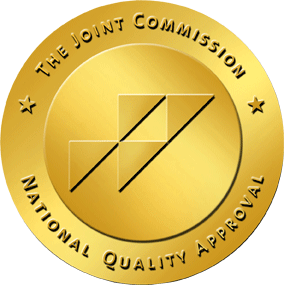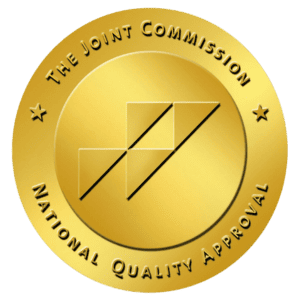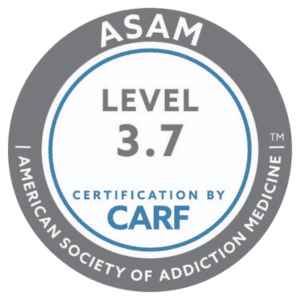What Is Suboxone, and What Is It Used for?
Suboxone is a brand name for the synthetic opioid buprenorphine. Buprenorphine is the active ingredient in Suboxone, Buprenex, and Subutex. All of these are best known for medication assisted treatment (MAT). Buprenorphine can also assist with detox from problem opioids without continued opioid maintenance.
Traditionally, medical professionals preferred low-dose benzodiazepines and clonidine to manage opioid withdrawal. These medications can help with some severe symptoms of opioid withdrawal, but buprenorphine treatments like Suboxone have led to more successful results.

How Does Suboxone Work to Treat Opioid Addiction?
Suboxone is a medication prescribed to help people who are addicted to opioids. It can reduce opioid cravings and withdrawal symptoms. How does Suboxone work? And what are the benefits of using it? Learn more about Suboxone, how it’s used in drug addiction treatment, and the benefits and risks of Suboxone.
Buprenorphine is an opioid, but it’s not derived from the poppy plant. It is completely synthetic. This means it is made in a lab. Buprenorphine medications like Suboxone are formulated so their binding properties are much stronger than all other opioids. Suboxone contains two drugs:
- Buprenorphine is a partial opioid agonist, which means it binds to opioid receptors in the brain but produces only a partial response. This makes it effective at reducing cravings and withdrawal symptoms without producing the same high as other opioids.
- Naloxone is an opioid antagonist, which means it blocks the effects of opioids. It is added to Suboxone to prevent abuse.
When taken as prescribed, Suboxone is safe and effective at treating opioid addiction. However, because it contains buprenorphine, it can be abused. It is important to take Suboxone only as prescribed and to talk to a doctor if you have any concerns.
How Does Suboxone Work?
Buprenorphine is an opioid, but it is not derived from the poppy plant, as it is completely synthetic. It is formulated so that its binding properties are much stronger than all other opioids available today.
Suboxone is an opioid partial agonist. It activates the opioid receptors in the brain, but less than other opioids. In effect, it “tricks” the brain into thinking you’re still taking heroin or other addictive opioids because it works on the brain in similar ways as those drugs. This reduces the effects of withdrawal and cravings.
Naloxone is an opioid antagonist, which means it blocks the effects of opioids. It is included in Suboxone to help prevent Suboxone from being abused. When taken as prescribed, Suboxone is safe and effective. It can help you reduce your use of opioids, achieve long-term recovery, and improve your quality of life.
How Do You Take Suboxone?
Suboxone is available as a sublingual film or tablet, which dissolves under the tongue. It is usually taken once a day, although the dose may be increased if you are using opioids frequently. Suboxone treatment should always begin with the advice and supervision of a medical professional. If you are taking Suboxone, it’s important to follow your doctor’s instructions and not change your dose without medical advice. You should also avoid alcohol and other drugs because they can interact with Suboxone and cause serious side effects.

What Are Suboxone Side Effects?
- Drowsiness
- Headache
- Nausea
- Vomiting
- Constipation
- Diarrhea
- Mild rash
- Itching
- Sweating
- Dry mouth
- Dizziness
What Are the Benefits of Suboxone?
Unlike other opioids, Suboxone is formulated specifically to treat opioid addiction. Its risk of abuse and overdose is significantly lower. Although Suboxone is an opioid, its unique formulation includes a ceiling. This limits the degree to which you can experience opioid-induced euphoria. Suboxone is specifically for people who are tolerant to opioids and is never prescribed for people who are naïve to opioids.
Unlike other opioids, buprenorphine drugs like Suboxone are partial opioid agonists. Drugs like heroin, fentanyl, opioid painkillers, and methadone are full opioid agonists. That means they bind to and activate the opioid receptors in your brain. When this happens, you experience the full range of opioid effects with no limit until overdose.
All opioids bind to certain receptors in the brain, which facilitate the effects of the opioids. Since Suboxone binds to these receptors more strongly than other opioids, it causes any other opioids to be thrown off the receptor sites.
Suboxone is an effective partial agonist because it:
- Binds to and activates opioid receptors in the brain to a certain level (a ceiling) that is much lower than full opioid agonists like heroin
- Blocks all other opioid agonists (like heroin) from binding to opioid receptors in the brain
Since Suboxone acts as a partial opioid agonist, it also suppresses opioid withdrawal symptoms.
Another distinction of Suboxone from other opioids of abuse is its length of action. Suboxone lasts from 24 up to 72 hours.
Other Medication Assisted Treatment (MAT)e
On the other hand, drugs like naloxone and naltrexone are opioid antagonists because they bind to opioid receptors in the brain without activating them. When this happens, all effects of opioid agonists are blocked. Naloxone is used by paramedics and medical professionals to reverse the effects of opioid overdose.
Vivitrol is naltrexone, an opioid antagonist, and it’s intended only for individuals who have been free from opioids for at least seven days. Like any MAT option, addiction counseling is necessary when receiving treatment with a naltrexone medication.
Read more about Naltrexone for opioid addiction treatment.
Methadone is an opioid antagonist as well. It must be administered in a licensed methadone clinic. Methadone itself can be addictive, so it should only be used under the care of a medical professional.
What Are the Risks of Suboxone?
Despite its potential benefits, Suboxone does come with some risks. These include:
- Drowsiness and impaired concentration: Like other opioids, Suboxone can cause drowsiness and make it difficult to concentrate. It should not be used while operating heavy machinery or driving.
- Nausea and vomiting: If you experience nausea and vomiting, it’s important to stay hydrated and avoid activities that could make them worse, like drinking alcohol.
- Constipation: To help prevent constipation while on Suboxone, drink plenty of fluids and eat a high-fiber diet. You may need to take a laxative if constipation becomes severe.
- Withdrawal symptoms: If you suddenly stop taking Suboxone, you may experience withdrawal symptoms such as anxiety, mood swings, and flu-like symptoms. These symptoms usually last for a few days but sometimes last for weeks or longer. If you experience withdrawal symptoms after stopping Suboxone, contact your doctor. They may prescribe a tapering schedule to help you slowly reduce your dose and minimize withdrawal symptoms.
Always talk to your doctor if you experience any of the Suboxone side effects above. While the risks of Suboxone should not be taken lightly, they are usually outweighed by the risks of continuing to use opioids.
Can You Become Addicted to Suboxone?
Suboxone is typically taken once a day, either in pill form or as a sublingual film that dissolves under the tongue. When taken as prescribed, Suboxone is safe and effective, but it can be abused. It’s possible to become addicted to Suboxone, though it’s more likely you’ll develop a dependence on the drug. Suboxone can produce mild feelings of euphoria, which can lead to drug abuse and drug addiction.
If you’re taking suboxone as directed, it’s unlikely you’ll become addicted, but if you start misusing the drug by taking higher doses or using it more often than prescribed, you may develop an addiction. Misusing Suboxone can lead to opioid withdrawal symptoms or overdose.
Can You Overdose on Suboxone?
Many people are surprised to learn that it is possible to overdose on Suboxone. Because it binds so tightly to opioid receptors, Suboxone can also cause respiratory depression and death if taken in large enough doses, but mostly when it is combined with other drugs that depress the respiratory system.
How Is Suboxone Used in Addiction Treatment?
Suboxone is used to help people overcome addiction to opioids. It is used in both outpatient addiction treatment and inpatient drug rehab settings, and it can be helpful in reducing cravings and withdrawal symptoms. Suboxone can help you stay in treatment longer, which can improve your chances of success.
How Is Suboxone Used for Opioid Detox?
The goal of Suboxone in medical opioid withdrawal is to quickly get control of withdrawal symptoms. This allows you to focus on addiction treatment. Since a key feature of Suboxone is its ability to suppress opioid withdrawal symptoms, it’s ideal for easing opioid withdrawal and detox.
Once you begin to experience moderate opioid withdrawal symptoms, Suboxone can be given in the appropriate dosage. Your dosage will vary, depending on:
- Your individual health and situation
- The length of time for detox
- Whether you’re in inpatient or outpatient detox
Over the remaining days of opioid detox, Suboxone dosages are steadily reduced as they continue to manage withdrawal symptoms. By the time problem opioids are out of your system, withdrawal symptoms have likely gotten much better.
Suboxone’s unique ability to bind to opioid receptors without euphoria allows it to have just enough impact to stave off withdrawal symptoms and not create a need for more withdrawal efforts.
What Happens After Detox?
Suboxone-assisted opioid detox allows opioid-dependent people to withdraw from opioids safely and comfortably. But detox is only the beginning of recovery from addiction.
After detox, it is necessary to participate in an addiction treatment and recovery program for lasting sobriety from opioid abuse. Even though buprenorphine can make opioid withdrawal much more comfortable, no one wants to re-experience it. The best way to increase the chances of not having to detox from opioids again is to participate in a customized and evidence-based addiction treatment program.
In a comprehensive drug rehab program, you can gain and learn the skills and tools to maintain a healthy life without drug abuse.
Some of the essential elements of drug rehab include:
- Individual therapy helps to discover and begin addressing personal traumas and challenges that may have contributed to drug abuse.
- Group therapy provides necessary support and helps conquer the shame many people with addictions feel once they are sober.
- Experiential therapies like hiking and other activities with a physical component help you heal wholly and can serve as healthy coping skills.
- Addiction education provides information about addiction, recovery, relapse prevention, and trigger awareness. All of these are necessary to abstain from future drug abuse.
- Aftercare provides you with local resources and groups to serve as sober support in activities and accountability to stay in recovery.
Drug treatment programs aim to establish a foundation for continued recovery from drug abuse and addiction. Countless people have remained drug-free after addiction treatment with the help of medication assisted treatment (MAT). Since MAT involves continued maintenance on opioids, it can help prevent withdrawal symptoms and cravings that lead to relapse.
Looking for Opioid Addiction Treatment?
Vogue Recovery Center provides medical detox for opioid addiction. We prescribe Suboxone as medical assistance when it’s clinically appropriate. And we do so in combination with a full behavioral therapy recovery plan. Our substance abuse treatment is evidence-based and motivating to keep you engaged in recovery. If you or a loved one is struggling, call us today for a free, confidential consultation.
- https://www.samhsa.gov/medication-assisted-treatment/medications-counseling-related-conditions/buprenorphine
- https://www.ncbi.nlm.nih.gov/pmc/articles/PMC5855417/
- https://nida.nih.gov/news-events/news-releases/2021/10/buprenorphine-misuse-decreased-among-us-adults-with-opioid-use-disorder-from-2015-2019

Medically Reviewed by Tina Gonzalez





